| Tokyo Shopping Guide |
|
|
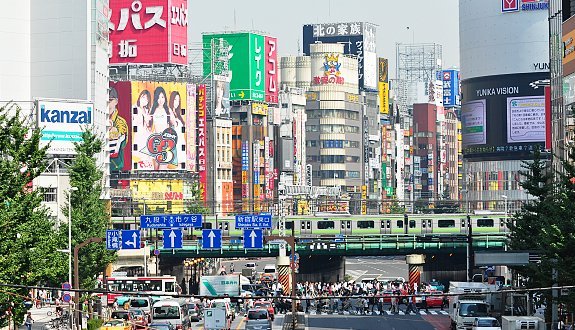 Tokyo's varied sightseeing districts double as shopping districts, many of them with their own character and specialties. The following is a general rundown of what to expect on the shopping scene of each district so you can familiarize and prepare yourself for a shopping spree in the big city. 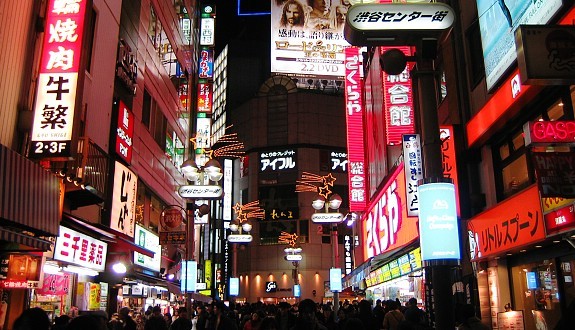 Centered around Shinjuku Station, a major transportation hub and the busiest train station in the world, this district is home to half a dozen major department stores, including several companies' flagship stores; as well as outlets of Japan's largest electronics retailers combined with a host of other shops and boutiques along its streets and underground shopping arcades. Shibuya - Center of youth fashion Around Shibuya Station is another large shopping district that is the birthplace of many of Japan's youth fashion trends. It is home to some well known, trend setting clothing stores such as Shibuya 109, as well as dozens of small fashion stores along its streets. Small boutiques, including high fashion and designer brands, continue to be found through to Aoyama and Daikanyama where the atmosphere is more subdued compared to the electric brightness of Shibuya. 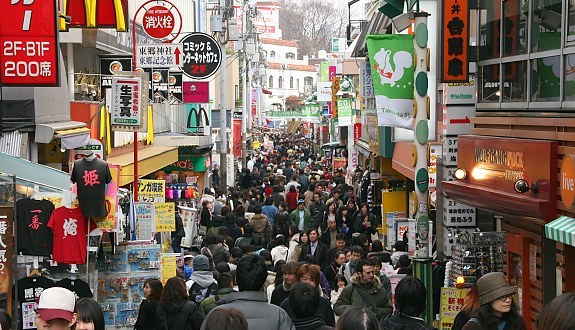 Harajuku has a split personality with two parallel shopping streets that cater to very different shoppers. Omotesando, known as Tokyo's Champs-Elysees, is a tree lined avenue with upscale boutiques, cafes and several leading designer brand shops. Takeshita Dori, on the other hand, is a center of youth fashion and counter culture found along a narrow street crammed with shops and cafes targeting the younger, teenage crowd. Ginza - Tokyo's premier upmarket shopping district The Ginza features high end department stores, boutiques, art galleries and designer brand stores. Nearly every leading Japanese and international brand name fashion and cosmetics company has a presence here, as well as major electronics brands such as Sony and Apple. The shopping extends into the nearby Yurakucho area with more department stores, boutiques and electronic retailers. 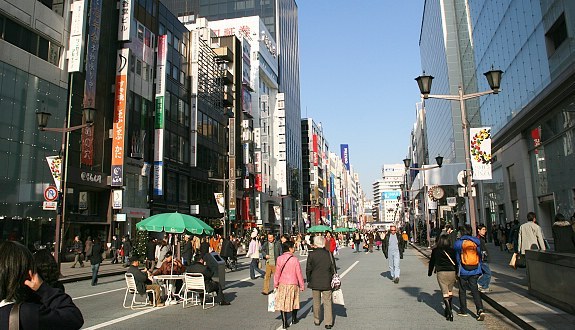 The Marunouchi district, on the west side of Tokyo Station, is a newly renovated business district that is headquarter to many of Japan's largest companies. The lower floors of several of the office buildings along the central Nakadori avenue contain cafes, restaurants and an abundance of shops. Additional department stores and an underground mall can be found at nearby Tokyo Station. Ikebukuro - Large department stores and electronics chains Ikebukuro is another large shopping district centered around Ikebukuro Station, Japan's second busiest train station. Ikebukuro is a battleground between large department store groups including Sunshine City, Tokyo's first city within a city. Ikebukuro also competes with Akihabara as an electronics center, with big electronics retailers aggressively expanding in the area. 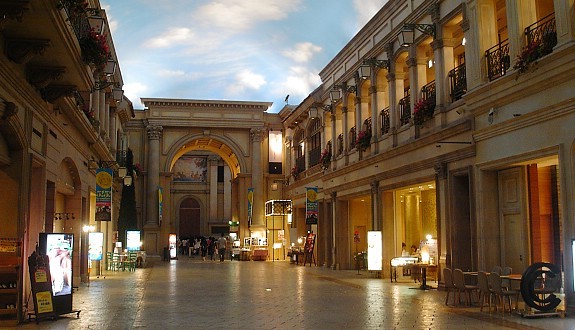 Odaiba is a popular shopping and entertainment district built on a man made island in Tokyo Bay. The island is a trendy date spot, and its Aquacity, Decks and Diver City shopping malls cater to this crowd by mixing shopping with entertainment. Odaiba also has the Palette Town shopping complex with the Venice themed Venus Fort shopping mall aimed at young women. Tokyo Solamachi - Shopping at the base of the Tokyo Skytree Opened in May 2012 at the base of the Tokyo Skytree, the Tokyo Solamachi is an exciting shopping and entertainment complex with over 300 shops and restaurants, including shops related to local Tokyo specialties and many unique souvenir shops. 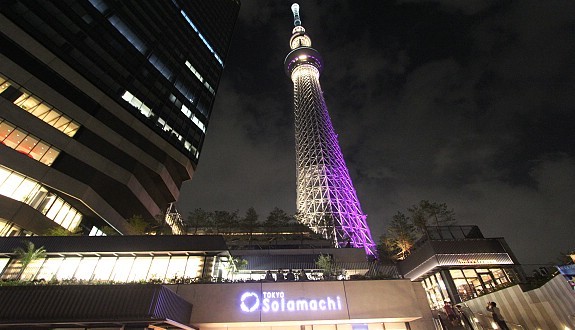 The Roppongi district has had a recent facelift with the opening of the Roppongi Hills and Tokyo Midtown complexes which brought in hundreds of new upscale shopping and dining choices. Most shops specialize in fashion, accessories, household good and interior design. Sugamo - The Old Ladies' Harajuku The shops along Sugamo's popular 800 meter long Jizo Dori shopping street cater to an elderly clientele. The street is named after a beloved statue of the Jizo Bodhisattva that stands on the grounds of the local temple and is believed to have healing powers. The district is particularly lively on the 4th, 14th and 24th of every month when the temple holds a small festival. 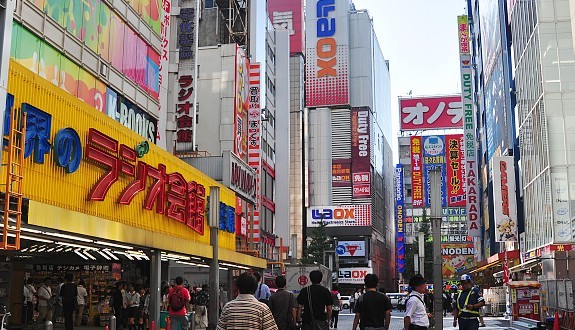 Akihabara - Electronics mecca and center of Otaku culture Akihabara is home to many electronics retailers such as Yodobashi Camera, Yamada Denki, Laox and Sofmap as well as hundreds of small discount electronics shops that are jammed along the district's streets and back alleys. Akihabara is also the center of Japan's burgeoning otaku culture with dozens of shops devoted to anime, manga, collectibles and games. Kappabashi - Restaurant supply and everything related to cooking (except food) Kappabashi is a specialty district that caters to restaurants. Found around Tawaramachi Station on the Ginza Subway line, not far from Asakusa, the district's shops sell everything a restaurant needs (except for fresh food) including cookware, ceramic, earthenware, knives, furniture, and even the plastic and wax food samples found in restaurant displays. Other specialized shopping districts found around Tokyo include Jimbocho, located north of the Imperial Palace, which is known for a high concentration of book publishers and book stores; and Ochanomizu (one stop from Akihabara Station on the JR Sobu Line) which is a haven for shoppers looking for musical instruments and sports equipment. 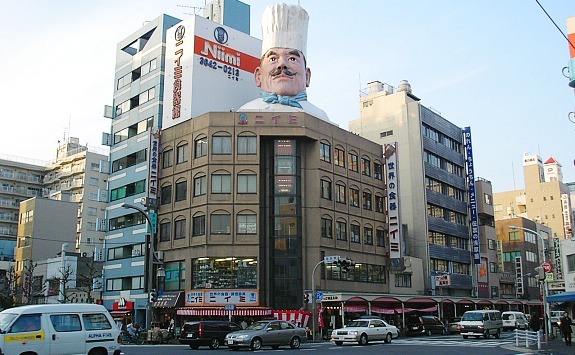 More variety and lower prices are offered by souvenir shops found in districts popular among foreign tourists, such as Asakusa, Akihabara and the Tokyo Skytree. Nakamise Dori, the shopping street along the approach to Sensoji Temple in Asakusa offers a particularly wide selection of souvenirs. Another favorite among tourists is the Oriental Bazaar along Omotesando in Harajuku. Finally, 100 yen shops sell lots of everyday items that make popular souvenirs such as chopsticks, sake cups, stationary, home decorations and other items, at an affordable 105 yen per item (100 yen plus 5 yen tax). 100 yen shops can be found all over Tokyo with one of the largest located on Takeshita Dori in Harajuku. The largest 100 yen shop in Japan, Daiso Giga Machida, is found near Machida Station, a 30 minute train ride from Shinjuku. 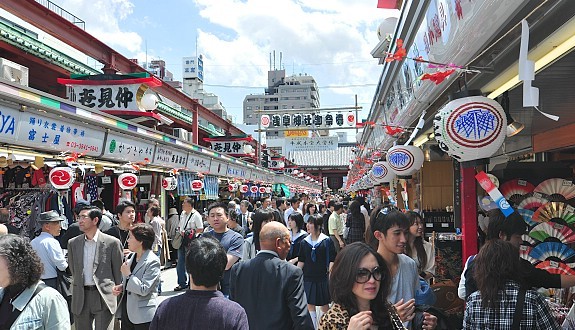 Flea markets specializing in second hand goods are also held throughout Tokyo at some temples, shrines and other public venues. They are usually held on Sundays, either every week or every other week, and usually have vendors selling second hand goods such as clothes, tools and antiques. 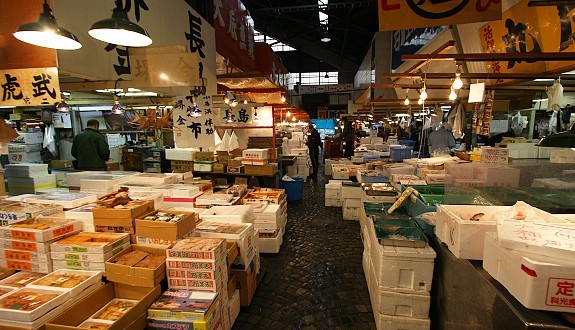
|
| How to get there |
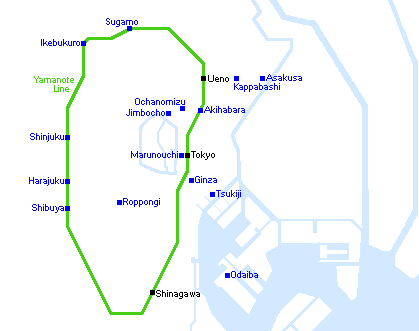 |
Thanks for sharing nice information.
AntwortenLöschenElectronics retailers in Dubai
Electronics store in Dubai
Electronic retail stores in Dubai